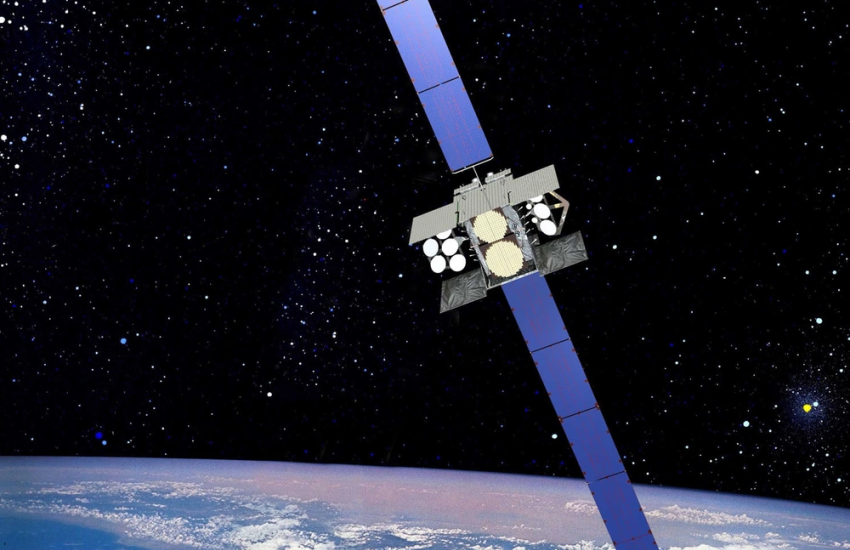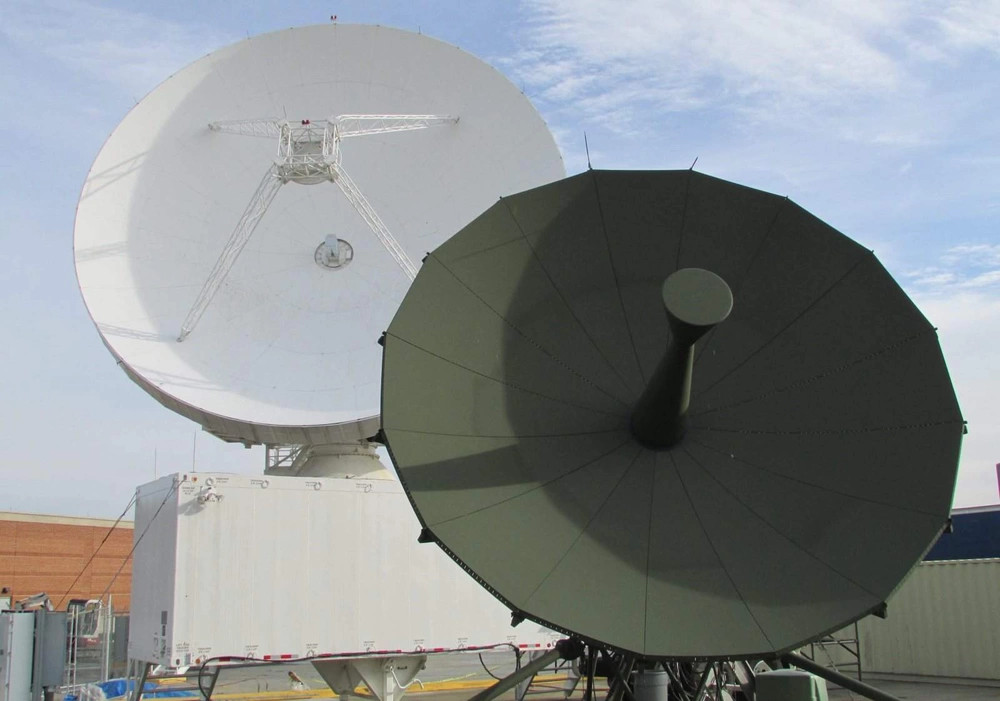The Future of Military Satellite Communications Starts Now
The time when the Department of Defense and the intelligence community spearheaded the design of advanced command and control technologies is long past. To a large extent, innovation is now driven by industry, including advanced satellite communications, such as the high-throughput geostationary orbits and proliferated low-Earth orbit satellites, commercial Earth observation satellites and new terrestrial terminal technologies. What is needed are improved processes and structure with wide stakeholder “buy-in” that give warfighters confidence that they will have an assured technological and operational edge over peer and near-peer adversaries.
Military wideband communications started in the 1960s with the Initial Defense Satellite Communications Project. At its zenith, the program had 26 satellites orbiting at approximately 20,700 miles and drifting about a degree an hour. The Initial Defense Satellite Communications Project eventually became Defense Satellite Communications System (DSCS) Phase I and was kept at a lower-than-geosynchronous orbit because the United States lacked the technology to protect against jamming. The solution was to keep satellites moving across the horizon so that users could always jump to a new “bird” when experiencing jamming. DSCS II was made up of 14 equatorial satellites and was more capable than the system that followed it in terms of hardening and anti-jam capabilities.
Its successor was Wideband Gapfiller, later designated as the Wideband Global System (WGS).
WGS is a commercial satellite transiting and receiving military frequencies and sitting on a Boeing 702 commercial bus. The program was formulated in the early 2000s and first launched in 2007. Incremental improvements have been made to the satellites, although the baseline design is the same as early 2000s. WGS-11 is scheduled to be launched in 2024 and will incorporate high throughput system technology, and it will provide more coverage beams, more beam-formed bandwidth and more frequency re-use than previous WGS satellites.
Narrowband satellite communications are critical to frontline forces. Military narrowband initiated with the original TACSAT-1, launched into geosynchronous orbit by a Titan-3C in 1969. It had multiple 5 KHz and 25 KHz channels, which could be used for communications to smaller earth terminals, but the military was constrained to that limited bandwidth through multiple constellation upgrades to Gapfiller then Fleet Satellite and then Ultra-High Frequency Follow-On (UFO). A handful of beyond-design life narrowband UFO satellites are still operational.
The successor, narrowband Mobile User Objective System (MUOS), is a five-satellite geosynchronous constellation with four on-orbit satellites providing global coverage between 65 degrees north to 65 degrees south latitude. MUOS-1 launched in February 2012, followed by MUOS-2 through MUOS-5, which launched in 2016. MUOS satellites were launched based on concerns of remaining UFO satellites’ longevity. Although the legacy UFO capability was immediately useable, delays in fielding the wideband code division multiple access waveform persisted. MUOS incorporated a UFO-11 legacy equivalent payload and the capability to use the wideband code division multiple access payload. Wideband code division multiple access was planned to be the Defense Department’s first Internet protocol satellite communications capability. Developed to provide an adequate MUOS bandwidth, it was designed with the still unfulfilled intent of eliminating the oversubscription of narrowband communications—too many users, not enough channels.

With wideband, the acquisition executives decided to fight a fiscal comparison battle. They tried to sell the idea to Congress based on the fact that a military satellite would be cheaper than a normal commercial lease. The up-front costs are greater, up to nearly $3 billion over the 14-year planned life versus less than $1 billion for WGS. But WGS isn’t a military satellite. It isn’t hardened, and the anti-jam capability is superficial. So, it’s far easier for an adversary to render it useless than its predecessor, which was designed and built with specific military threats in mind.
Narrowband had a more subtle but significant design anomaly. The operational requirements document developed by military staff fixed the threshold capacity of MUOS at 1,997 simultaneous accesses. But that requirement assumed those would be essentially a “one talk, all listen” architecture as was the UFO and all previous narrowband satellites. A transmitting warfighter could then talk to one, 10 or 100 listeners. What was built could be compared to a telephone system in space in which a single circuit is limited to one individual at each end of the link. Add to that a user community that was substantially expanded to include Canada, potentially other allies and the Department of Homeland Security, and you end up with a system even more oversubscribed than the one it replaced. Although enhancements have improved the system, one could argue that the narrowband capability is every bit as oversubscribed as when MUOS was conceived.
A few of the wideband DSCS satellites are still operational. Launches have been designed with a continuing series of improvements, but WGS is still fundamentally a commercial satellite built with military frequencies. However, it has several layers of overlapping coverage up to 65 degrees north and south of the equator. Further, a Protected Tactical Enterprise Service using a protected tactical waveform is being incorporated into the WGS construct.
Concerning MUOS, the gap between on-orbit satellites and the as-yet unfulfilled large-scale availability and installation of wideband code division multiple access-capable air, ground and sea terminals has resulted in a situation where the oldest satellite will be beyond its initial estimated design life before those air, ground and sea terminals are tested, certified and available for installation and subsequent deployment. Although Handheld, Manpack and Small Form Fit terminals are readily deployable, aircraft and shipboard installations are more complex and require platform certification of the terminals. This is especially true of fixed-wing and rotary aircraft when subsystems that touch the individual type of aircraft’s operational flight programs are carefully tested and then certified before widespread installation—a time-consuming serial process.
In the last few years, the undersecretary of Defense, Acquisition and Sustainment oversight on Acquisition Category 1 programs has diminished and has been turned over to the Title 10 services. This oversight transfer has further complicated the ability to synchronize multi-Title 10 service efforts that oversee key elements necessary for fielding and sustaining end-to-end operational capability. In addition to interservice competition for budgetary resources, intraservice competition is a significant factor. In a nutshell, military satellite communications-related programs compete for resources against other individual service priorities. The level of those priorities varies among the different services. Further, individual service resource sponsors are very reluctant to budget resources for those military satellite communications programs dependent upon the timely scheduled completion of other necessary intra and interservice critical path actions. The service resource sponsors are highly averse to putting budget resources at risk of being marked in the event that those necessary critical path actions fail to deliver on time. This, in turn, extends the delivery timelines of end-to-end capabilities.
An additional synchronization complication is the system engineering aspects of coordination among individual system program offices that might be responsible for a single type of platform—for example, a specific type of aircraft. The result is that a certain type of aircraft might have broad fleet installation; however, the other aircraft and other joint forces with which this aircraft type would have to interoperate in a joint or combined arms operational environment may not yet have been equipped. This impacts interoperability, most critically among the service component commands that are forward deployed to the combatant commanders. The lack of macro-level service system engineering has a direct impact on the operational engineering goal of fielding and sustaining end-to-end operational combat capability.
Overarching system engineering that is empowered and resourced to oversee force side fielding and sustainment of capability is crucial for accelerating the fielding of technology at a sufficient rate for operational forces to have a quality and quantity advantage over potential adversaries. Effective and efficient system engineering entails far more than the management of the process. The process focuses on the development and review of system engineering plans and system engineering management plans, vice the critical need for actual hands-on planning and execution of system engineering leadership and management. Efficient and effective system engineering also can embrace a parallel or near parallel acquisition process that can contribute to the accelerated fielding of capability.
Continuous knowledgeable interaction between the operational forces and the acquisition community needs to be improved. Although the Joint Staff and service staff are performing the key role in establishing and validating requirements and doctrine, ongoing dialogue with the operational forces is essential and must be enhanced. This is to ensure that evolving operational needs are rapidly identified and acted upon. It also alerts the combat commands and their service component commanders’ staff to when new capabilities arrive in their theater of operations and in what quantity. Finally, it enables the rapid updating of combatant commander operations plans and operation orders that can take advantage of newly available capabilities. The best example of how this can effectively be accomplished is the process used by the U.S. Special Operations Command.
The combatant commands can influence deputy secretary of defense program decision memorandums by their highest-ranked candidates on their integrated priorities list. The combatant commanders can also coordinate their rankings to maximize their four-star leverage. Finally, the combatant commanders can issue timely direction to their individual service component commanders that the forces those services will deploy have the organic capabilities necessary to achieve required interoperability.
Concerning the way ahead, what are near-term, midterm and long-term solutions that have the potential to improve the fielding and sustaining of advanced military capabilities operations and procurement?
Near Term: Create an empowered and resourced military satellite communications joint program office that has end-to-end system engineering responsibilities and continuous insight and participation by all the Title 10 stakeholders, the Joint Staff and the combatant commanders. This structure enhances the probability that decisions reflect broader Defense Department entities, especially when it comes to resourcing trade-offs, including the full range of integrated life-cycle support incorporating capability sustainment, capability improvement and training.
Midterm: Assess the modernization of the existing Planning, Programming, Budgeting and Execution as recommended by the February 2022 The MITRE Corporation study, “Pillars of the Modern Defense Budgeting System,” by bringing the decades-old process into the technology accelerating information and knowledge age.
Long Term: The current Title 10 resulted from an overhaul and renumbering of the former Title 10 and Title 34 into one by an act of Congress in 1956. Consider assessing whether the structure of the armed forces, created by the National Security Act of 1947 and updated through Title 10, adequately supports today’s modern defense environment and whether these needs require significant amendment or if an entirely new framework is needed to address modern-day technological rate of change and its impact on warfighting effectiveness.
Lt. Col. James Mazzei, USAF (Ret.), is a military satellite communications expert who spent much of the last 20 years working with a SATCOM-based federally funded research and development center and currently teaches the AFCEA Military Satellite Communications class.
Capt. John Flynn, USN (Ret.), and late colleague Lt. Col. Frank Prautzsch, USA (Ret.), provided commentary and insights that have contributed significantly to this article.






Comments